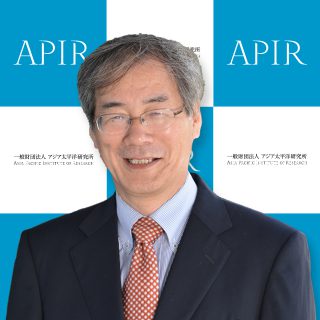
INADA, Yoshihisa
Director of Research & Director of Center for Quantitative Economic Analysis(CQEA), Asia Pacific Institute of Research and Professor emeritus, Konan University
(As of 04/01/2025)
Research theme
- Macroeconomics, Applied Econometrics, Economic Forecasting
Educational background
- Kobe University, B.A., Economics, 1976
- Kobe University, M.A., Economics, 1978
- Kobe University, Ph.D., Economics, 1992
Career
- Kobe-Gakuin University, Lecturer, 1981
- Kobe-Gakuin University, Associate Professor, 1984
- Visiting Researcher, University of Pennsylvania, 1985-1986
- Visiting Researcher, The International Center for the Study of East Asian Development, 1991-2000
- Associate Professor, Ritsumeikan University, 1992-1994
- Professor, Faculty of Economics, Konan University, 1995-2021
- Visiting Researcher, Research Institute of the Economic Planning Agency, 1995-1998
- Visiting Researcher, University of Pennsylvania, 1997
- Research Analyst, Gifu Research Center for Industry and Economy, 1998-1999
- Research Analyst, Institute of Developing Economies, 1996-
- Visiting Researcher, University of Pennsylvania, 2004
- Research Fellow, Kansai Institute for Social and Economic Research
- Professor emeritus, Konan University, 2021
Books and Chapters
- 1. The U.S.-Japan Mutual Dependency and LINK Model, Nihonhyoron-sha,December 1991
- 2. “Econometric Analysis of Tax Burdens by Income Class”, Empirical Analysis of Multi-
- Sectoral Econometric Models,edited by K. Ogawa, M. Saito and S. Ninomiya, Sobun-sha,
- February 1992
- 3. “The ICSEAD Japan-United States-Rest of the World Model,”in S. Ichimura and Y.
- Matsumoto (ed.), Econometric Models of Asia- Pacific Economies, Springer-Verlag, 1993
- 4. “Impacts of the EC Integration on Japanese Economy,”in Mitsuru Toida (ed.), Impacts of
- the EC Integration on Asian Industrializing Region, Institute of Developing Economies,
- 1995, pp. 104-134
- 5. “Quantitative Analysis of the Pension System-In Connection with the Growth Path of the
- Japanese Economy,”Review of Social Policy, No. 3, March 1994, with Kazuo Ogawa,
- Masayuki Tamaoka, and Ichiro Tokutsu
- 6. “Econometric Model Building of the Chinese Economy and Some Simulation Analyses,”
- ICSEAD Working Paper Series (A) No. 95-3, 1995, with Yasukazu Ichino of ICSEAD
- 7. “Econometric Impact of the Regional Integration with Special Reference to APEC,”
- ICSEAD Working Paper Series (A) No. 95-5, 1995, with Yasukazu Ichino of ICSEAD
- 8. “Long Term Outlook for the Japanese Economy,” ICSEAD Working Paper Series (A) No.
- 96-1, 1996, with Yasukazu Ichino of ICSEAD
- 9. “Long Term Outlook for the Japanese Economy: 1996-2005,”1997 Economic Forecast
- for Asian Industrializing Region, Institute for Developing Economies, March 1997
- 10. “ICSEAD’s Econometric Model of the Chinese Economy,” Econometric Modeling of China,
- edited by L.R. Klein and S. Ichimura, World Scientific, 2000
- 11. “A Retrospective View of the Asian Financial Crisis: Special Reference to Exchange Rate
- Policy,” Econometric Modeling of China, edited by L.R. Klein and S. Ichimura, World
- Scientific, 2000, with Laurence Klein and Junichi Makino
- 12. “China’s Energy Balance and Environmental Problem: An Energy Balance Model Approach,”
- Win-win Strategies of Global and Domestic Climate Change Policy for China, Asia and
- Japan, 2004, paper presented to International Collaboration Project on Sustainable Societies
- sponsored by ESRI.
